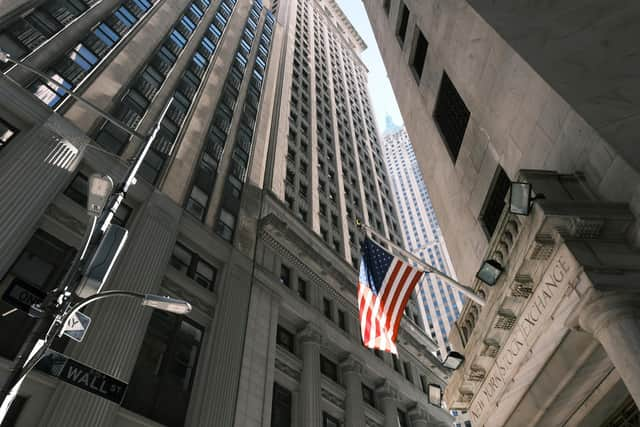Hope of end to US interest rate rises as inflation eases: Stephen Done
However, core inflation, which strips out more volatile food and energy costs, remained stubbornly high despite a slight dip in April to 5.5 per cent, having barely moved within the previous 12 months.
This data release fuelled investors’ hopes that the Federal Reserve’s recent decision to raise its benchmark interest rate for the 10th consecutive time to more than 5 per cent would mark the end of the monetary tightening campaign.
Advertisement
Hide AdAdvertisement
Hide AdUS interest rates are currently at the highest level experienced in 16 years and investors have started to predict and price in an almost 0.75 per cent rate cut by the end of the year.


As a result, both US treasuries and Wall Street stocks advanced with the yields on both the two-year and 10-year treasuries falling 0.11 per cent and 0.07 per cent, respectively.
The tech-heavy Nasdaq Composite added 1 per cent, closing at its highest level since June, while the blue-chip S&P finished 0.4 per cent higher.
The prospect of lower interest rates increases the appeal to investors of companies that promise long-term growth.
Advertisement
Hide AdAdvertisement
Hide AdThe Bank of England (BoE) once again followed the Fed with a 12th consecutive interest rate rise.
The Monetary Policy Committee agreed, by a seven to two majority, to increase UK borrowing costs by 0.25 per cent to 4.45 per cent, the highest level experienced in almost 15 years.
The BoE also revised and significantly increased its short-term inflation forecasts with inflation now expected to fall below its 2 per cent target at the beginning of 2025, instead of the previous 12-month prediction.
Despite this, the bank is now estimating that the UK economy will avoid recession relatively comfortably, forecasting a growth of 2.25 per cent in gross domestic product (GDP) by mid-2026.
Advertisement
Hide AdAdvertisement
Hide AdThe growth forecast for the UK, however, continued to be weak with annual growth expected to struggle to exceed 1 per cent over the next three years with unemployment expected to rise from 3.8 per cent at present to 4.5 per cent in 2026.
It is estimated that the main effects of the rise in interest rates from 0.1 per cent in December 2021 have not yet been felt by households, with only a third of the impact in place due to the time lag associated with the policy.
As a result of the rate hike, London’s FTSE 100 was down 0.4 per cent with traders now anticipating that rates will peak at 4.75 per cent in September, something which is expected to have continued negative impact on business performance.
Leeds-based Tracsis, a software and services company which provides transport planning, scheduling, and data analysis solutions to various industries, including rail, road, and air transportation has continued to prosper in recent years despite the weakening economic environment.
Advertisement
Hide AdAdvertisement
Hide AdTracsis reported solid business growth for the six months ending January 31. The business reported a 34 per cent increase in revenue to £39.2m which included organic revenue growth at 13 per cent.
Tracsis has said that the business has been investing in implementing a more integrated and simplified operating model that can accelerate future growth, with the business well-positioned to benefit from the digital transformation of the rail industry in both the UK and North American markets.
Stephen Done is part of the Investment Research Team at Redmayne Bentley